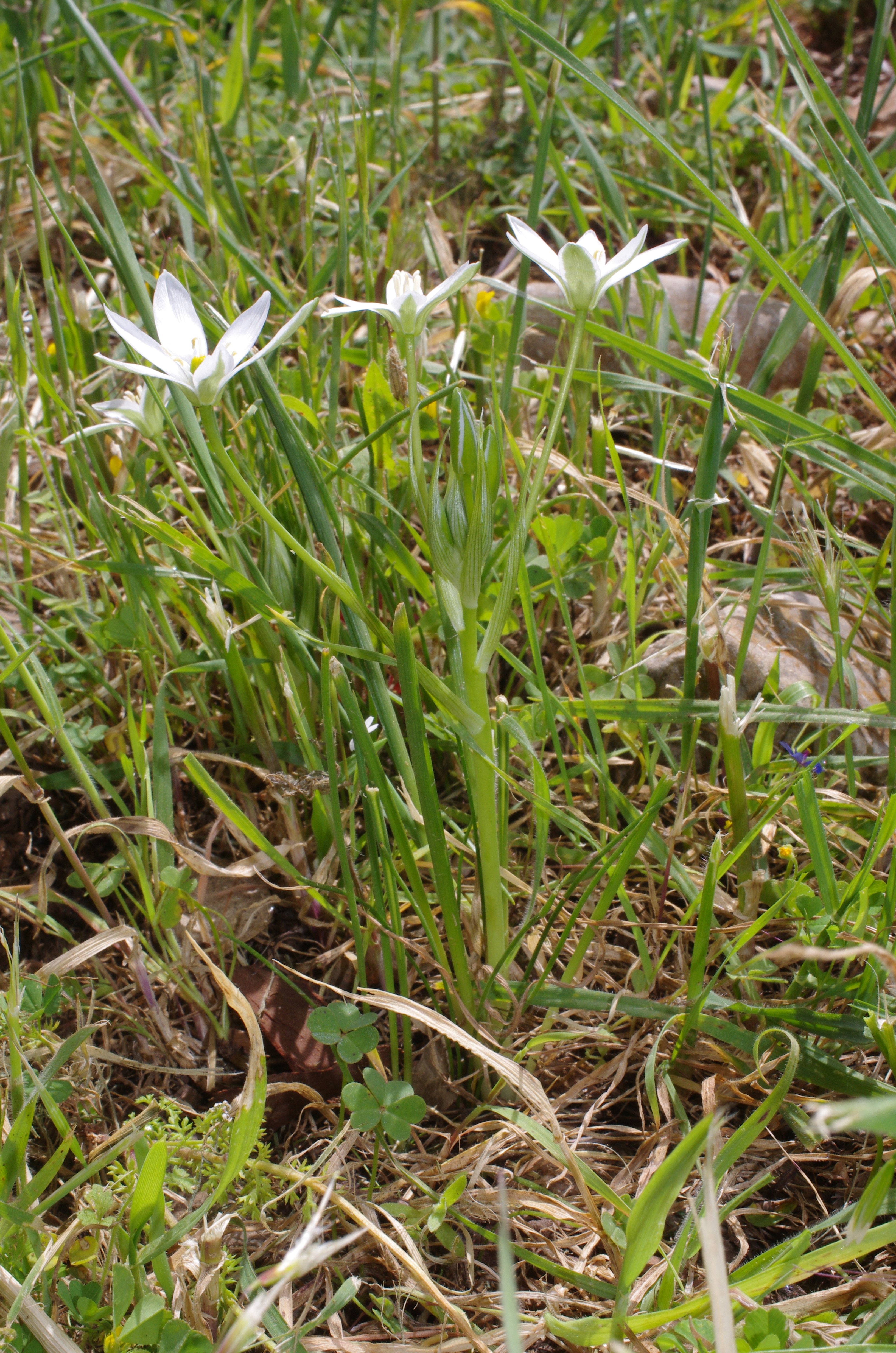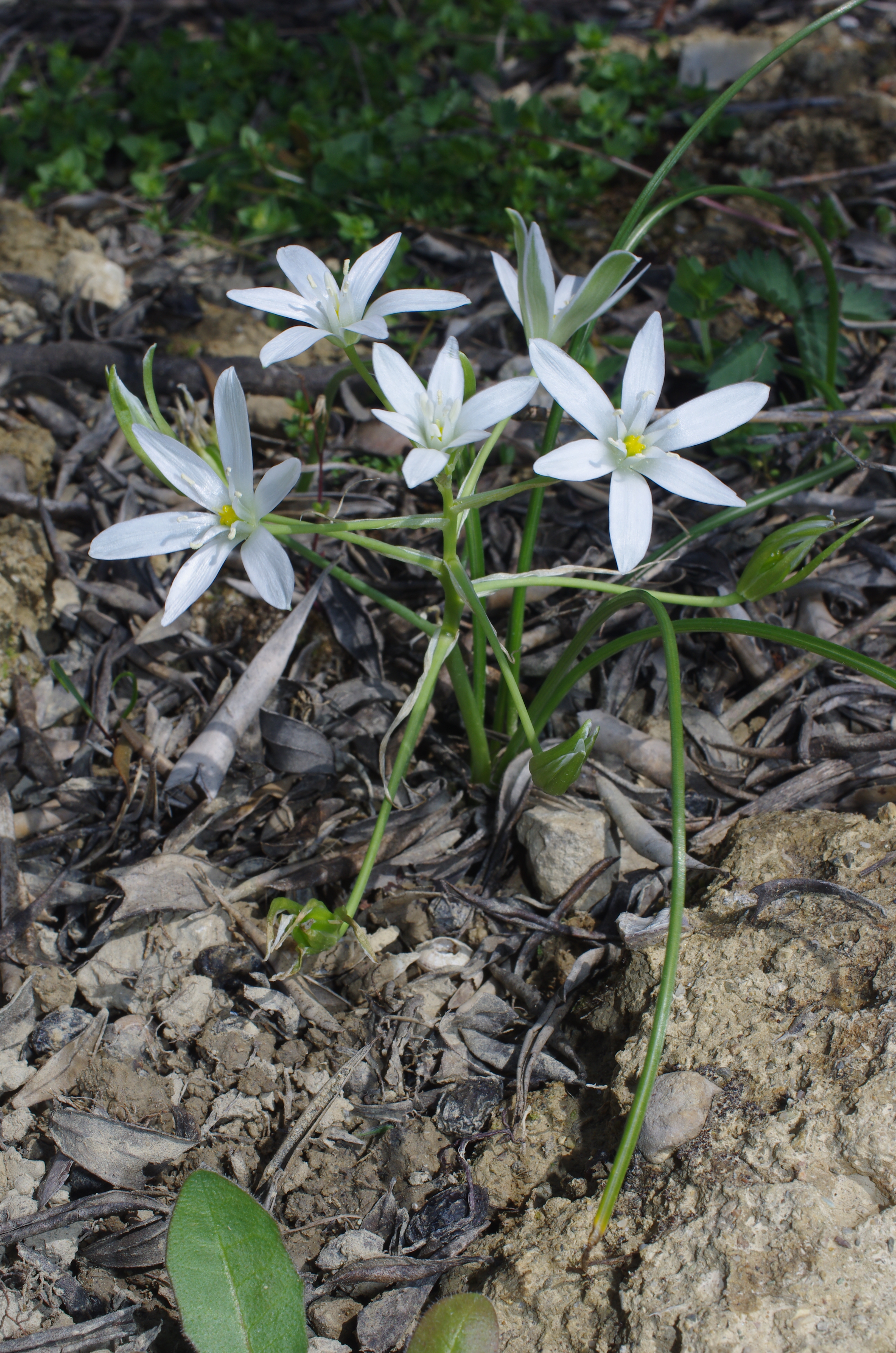Ornithogalum divergens Boreau
Synonymy

Distribution
GR(IoI NPi Pe StE EC NC NE NAe WAe Kik KK EAe)
Greece (East Aegean islands present; East Central Greece present; Ionian Islands present; Kiklades present; Kriti and Karpathos present; North Aegean islands present; North Central Greece present; North Pindos present; North-East Greece present; Peloponnisos present; Sterea Ellas present; West Aegean islands present)
Notes
The name O. divergens, as adopted in Strid & Tan (1991: 692), possibly refers to an exclusively W European taxon and is inappropriate to be used for Greek material (F. Speta, pers. comm.).
O. umbellatum has been typified by Stearn on triploid plants (2n=27) (as shown by Speta 2000a) with few large, leaf-bearing bulbils and corymbose inflorescence. This is a mainly C and W European taxon. Its name is inappropriate for Greek plants of this complex. Landström (1989) accepted another typification on polyploid material from Spain by Raamsdonk who found only hexaploid plants at the type locality (but Moret & al. 1991 found also triploid ones) which is in conflict with the protologue which says "Habitat in Germania, Gallia." Raamsdonk's typification has not been accepted recently (see, e.g., Jarvis 2007: 709). Triploid plants do not appear in the study of Landström (1989), where only tetra- to hexaploid numbers have been counted, so they can be regarded as actually unknown from Greece. O. umbellatum in the sense of Landström is at least largely what is called by Martínez-Azorin O. divergens from the habit of the plants figured by Landström and from at least the pentaploid and hexaploid plants. It remains unclear, whether the Greek plants belong to O. divergens at all (Speta restricts the use of O. divergens to W European plants, see Speta 2000a: 781), especially the tetraploids. As nothing has been published and as no other name is available, placing the Greek plants to O. divergens in a broad sense referring to Martínez-Azorin & al. (2009) reflects best the current state of knowledge. It makes no sense to place this unclear complex into two taxa in Greece. On Crete, there are no distinguishable two members of this complex (R. Jahn).
Images
Specimens
| Country | Date | Collector + collecting number | Herbaria | Type | Scan | Derivatives | |
|---|---|---|---|---|---|---|---|
| Greece | 2017-04-10 | Willing,R. & Willing, E. 275595 | B | ||||
| Citation: Greece, Lassithi, S Kourounes, 35°16'35.004"N, 25°38'11.004"E, 10 Apr 2017, Willing,R. & E. Willing 275595 (B B 10 0732113) Specimen summary: B B 10 0732113 Preferred stable URI: http://herbarium.bgbm.org/object/B100732113 | |||||||
| Greece | 2017-04-17 | Willing,R. & Willing, E. 275869 | B | ||||
| Citation: Greece, Lassithi, W Armeni, 35°4'27.984"N, 26°5'2.004"E, 17 Apr 2017, Willing,R. & E. Willing 275869 (B B 10 0732386) Specimen summary: B B 10 0732386 Preferred stable URI: http://herbarium.bgbm.org/object/B100732386 | |||||||


